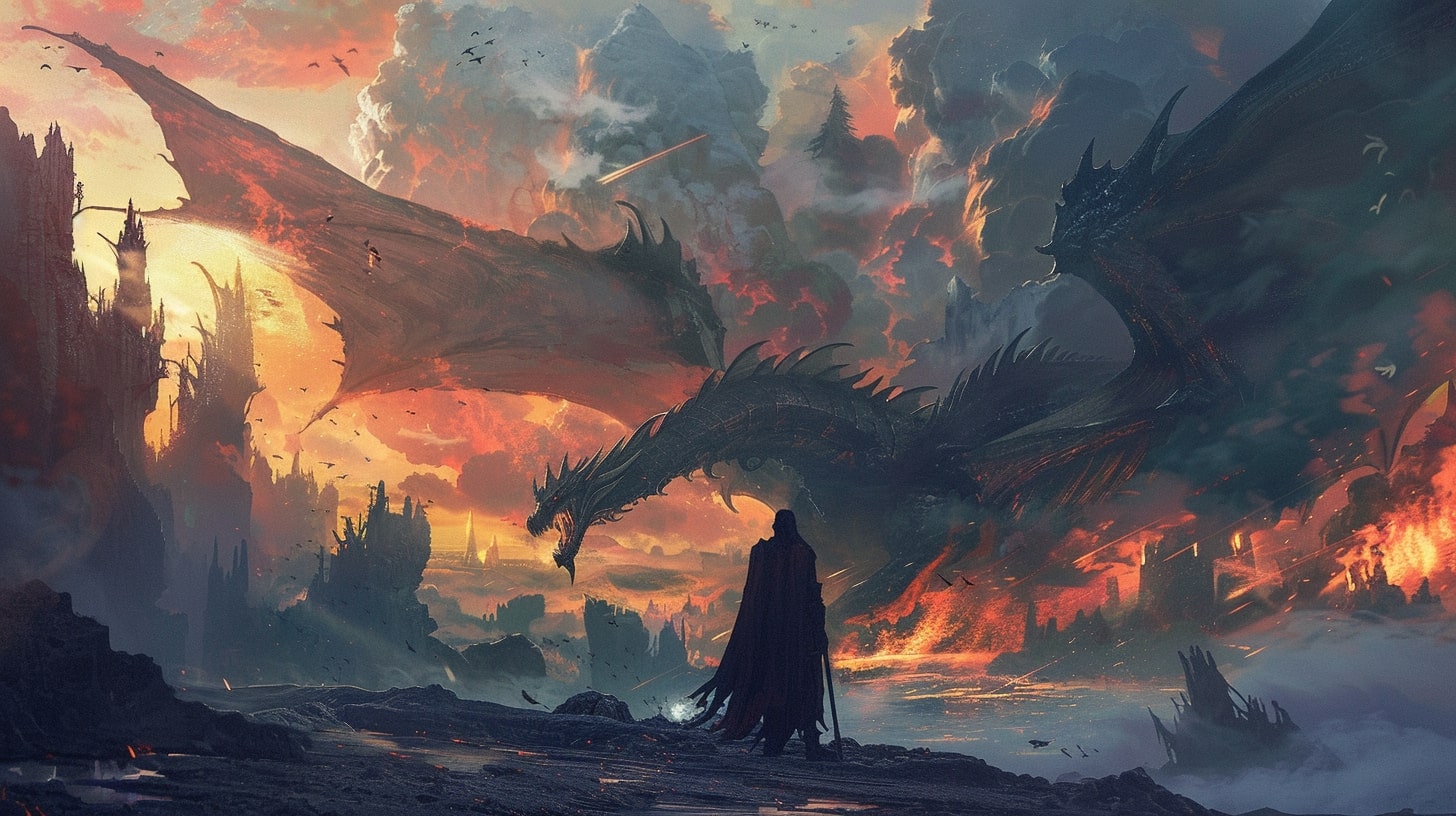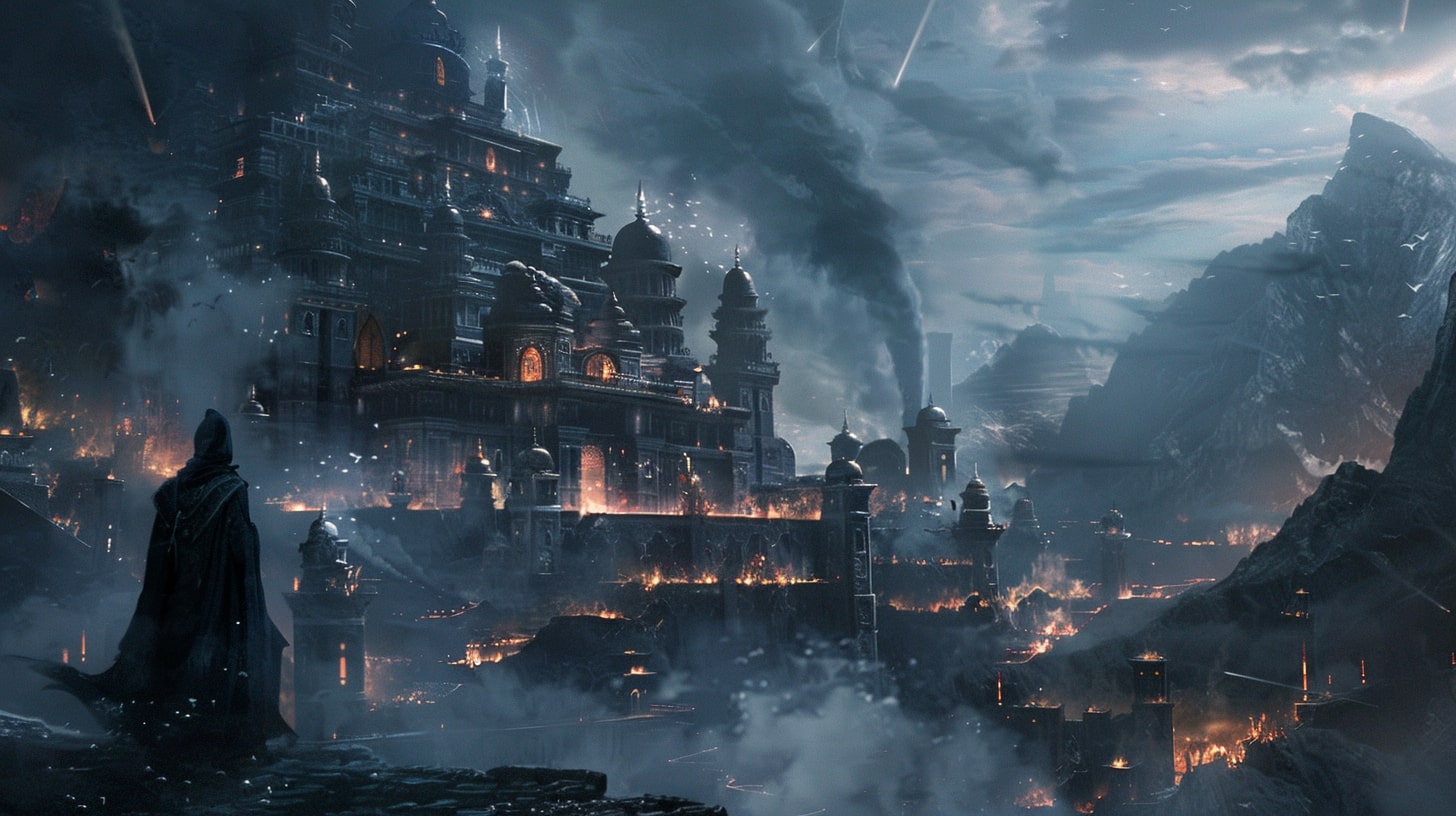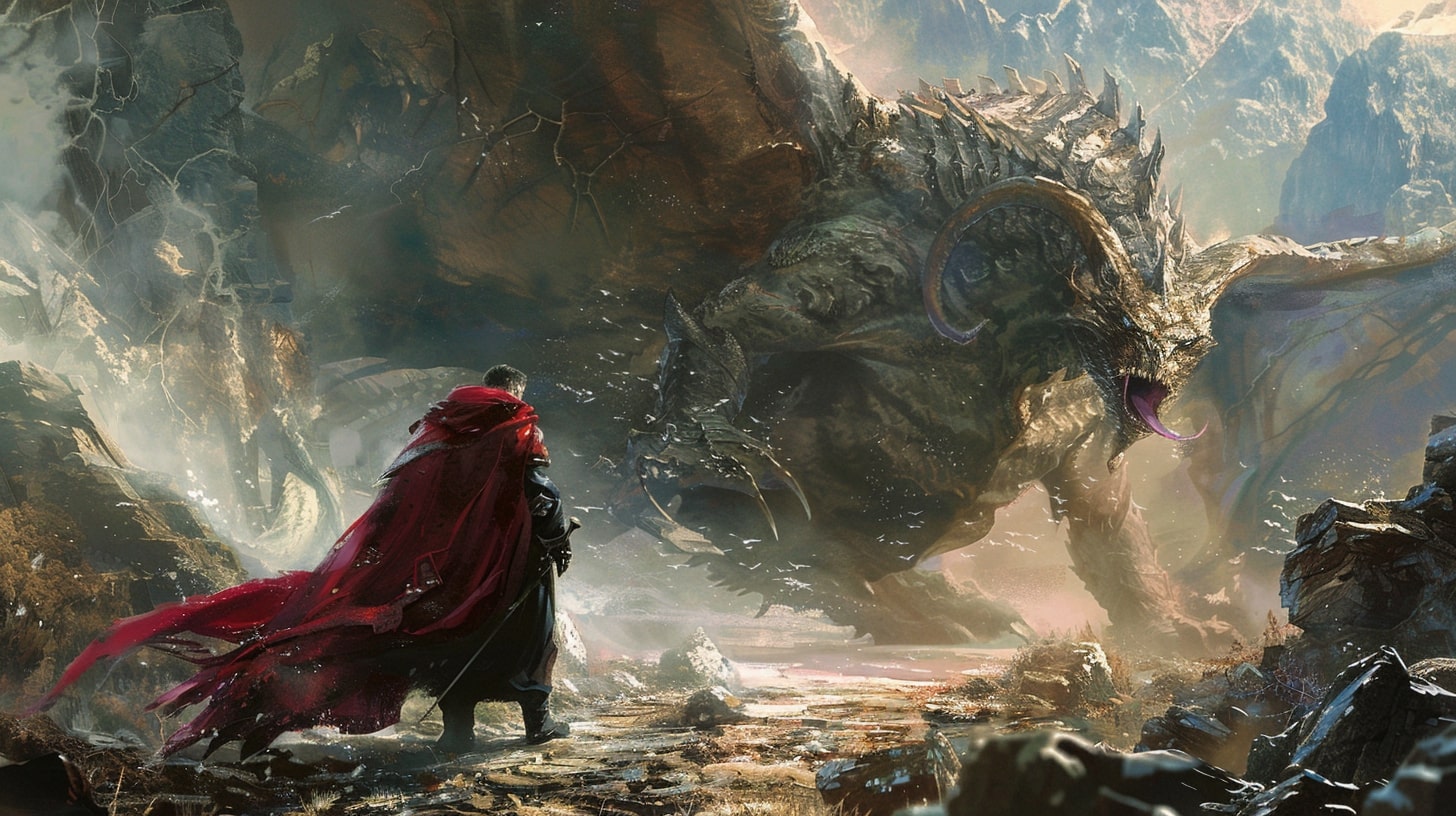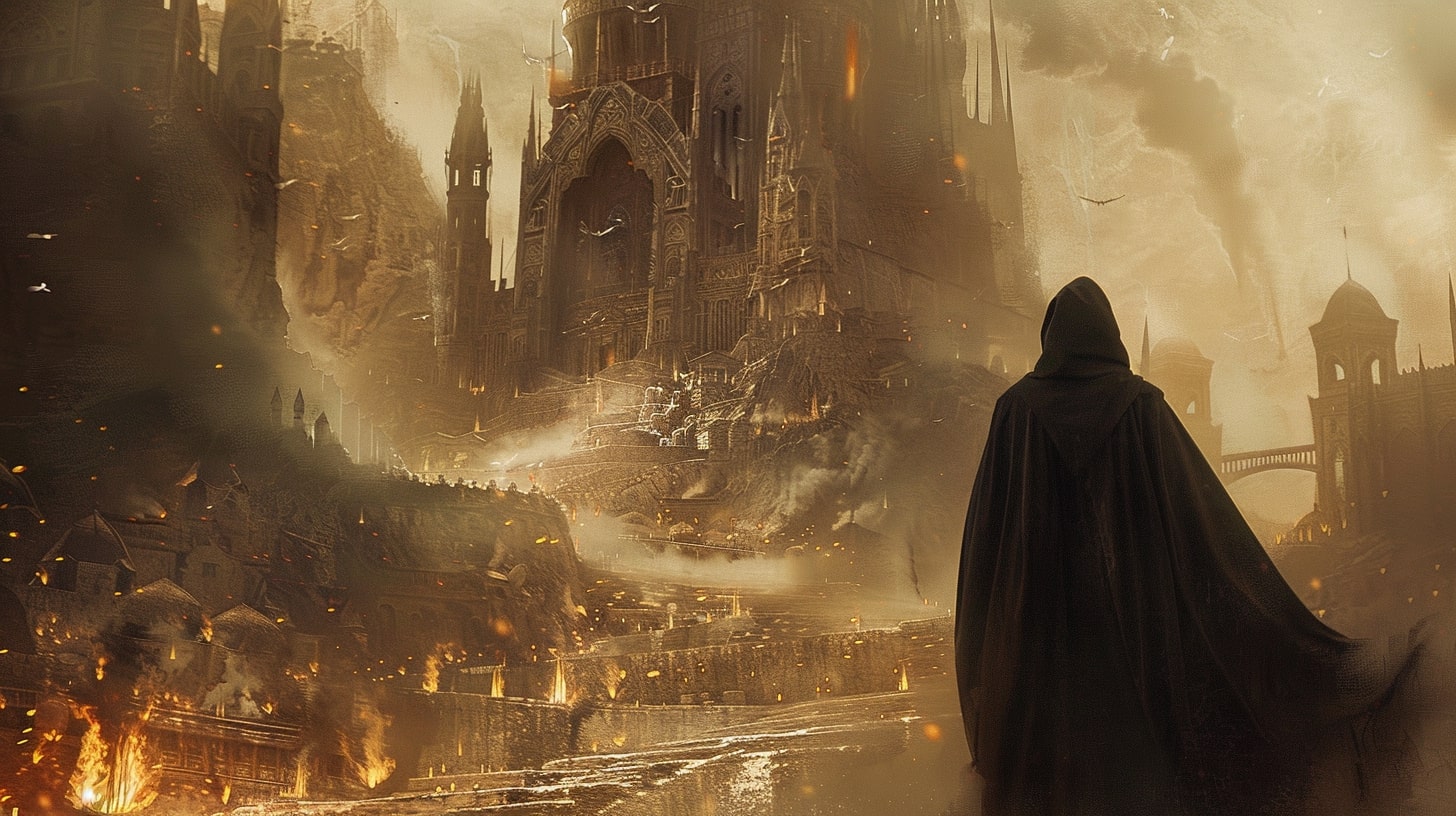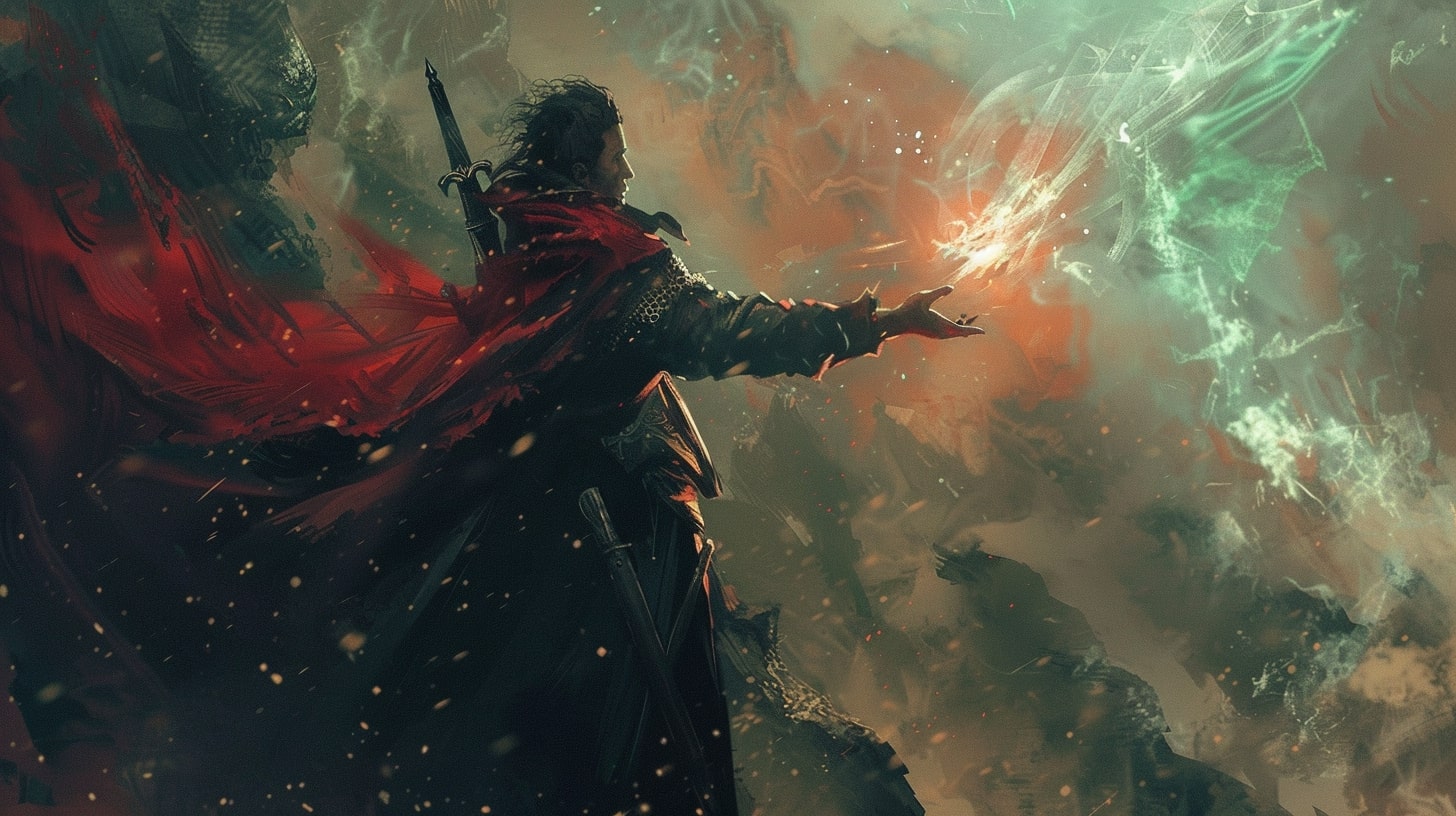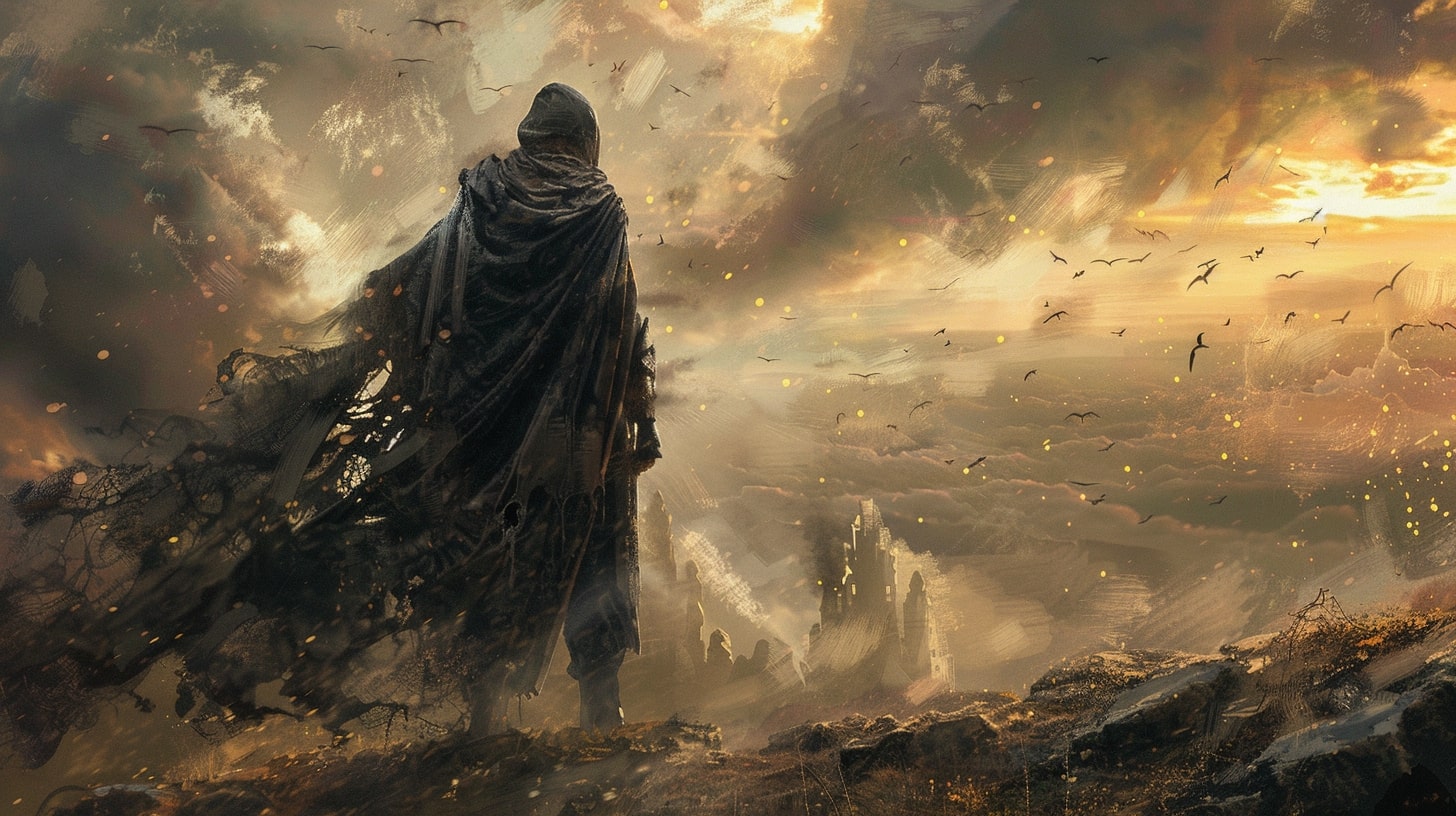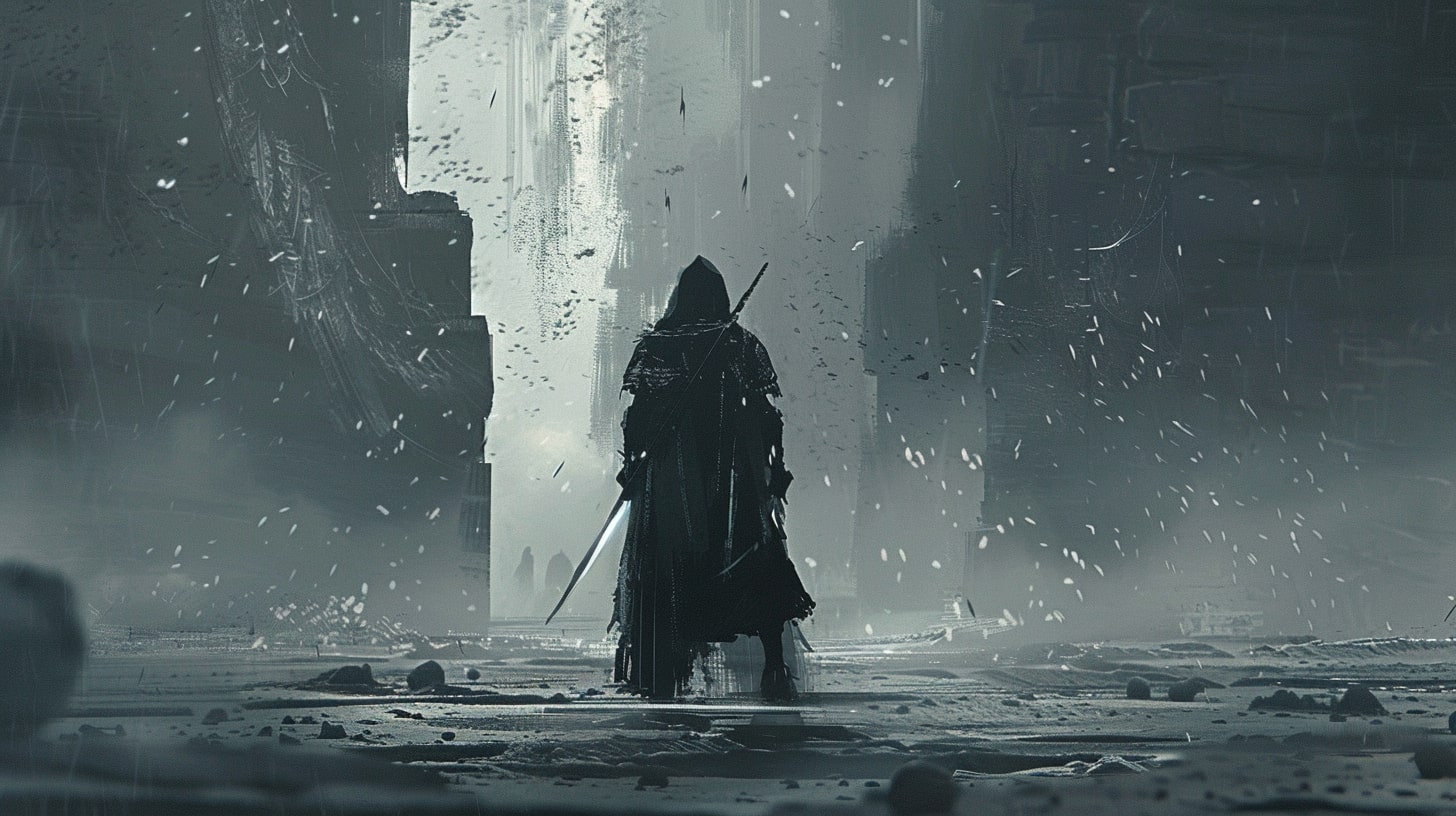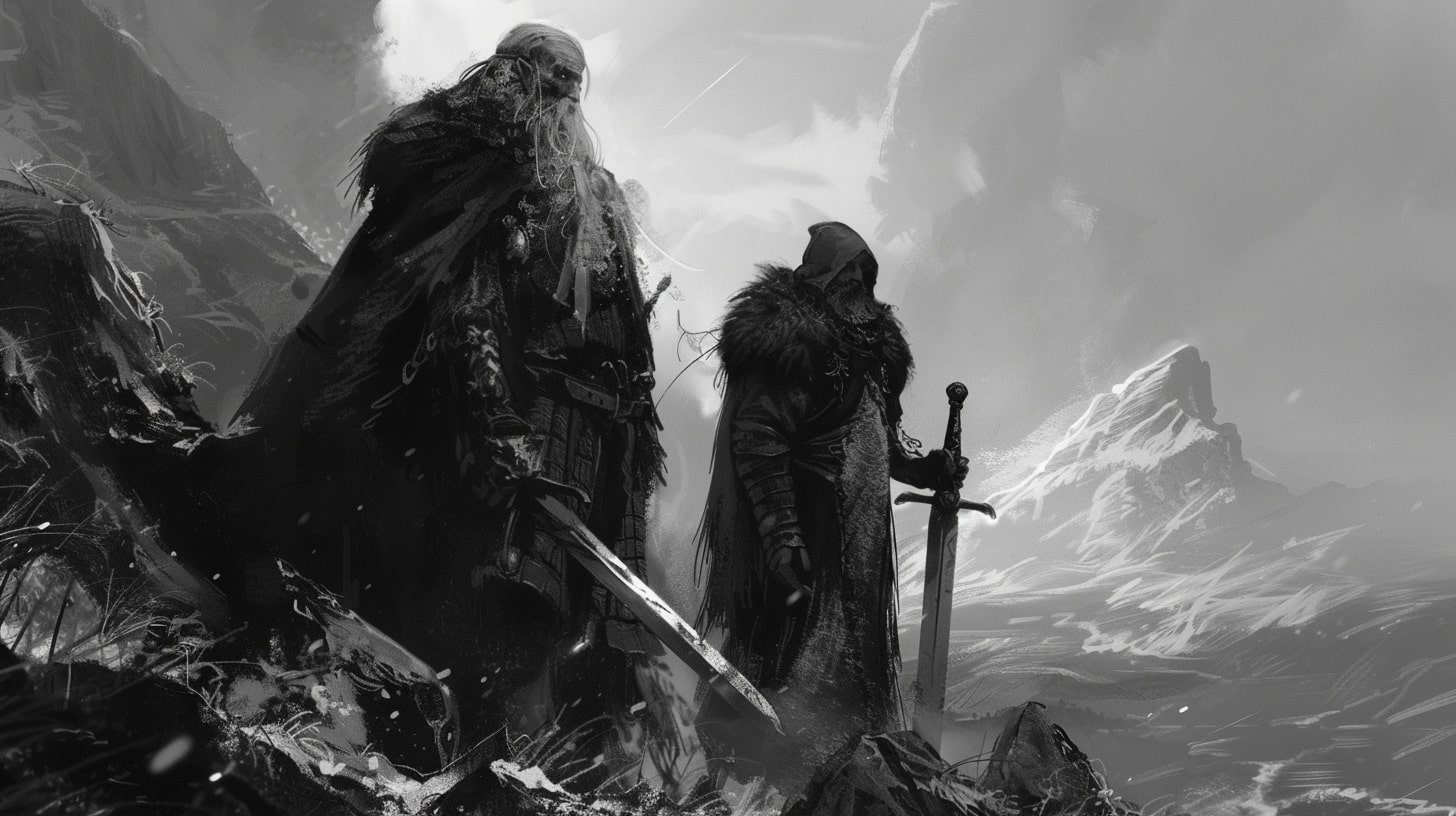Unleashing Character Alchemy
Welcome to the enchanting world of character alchemy, where the art of worldbuilding and character development intertwine like a magical dance.
It’s a place where vibrant characters spring to life, ready to embark on thrilling adventures in your stories. Prepare to be spellbound as we explore why these two elements go hand in hand and discover the magic of bringing characters to life.
Why Worldbuilding and Character Development Go Hand in Hand
Imagine a world devoid of captivating characters.
It would be like a spell without an incantation, a potion without a secret ingredient. Worldbuilding provides the backdrop, the rich tapestry upon which your characters come to life. It shapes their experiences, influences their choices, and sets the stage for their growth. Without a well-crafted world, your characters would be like lost souls wandering in a featureless void.
Likewise, characters breathe life into your world. They are the ones who traverse its vast landscapes, encounter its wonders, and face its challenges. Their actions and decisions shape the world around them, leaving an indelible mark. Through their unique perspectives and experiences, your world gains depth and complexity. It becomes a realm where readers can immerse themselves, losing track of time as they journey alongside your characters.
This is why character development in worldbuilding is so important to whatever you do. Without character development, you have no story and without the worldbuilding of it all you don’t have the setting for the stories to take place in.
The Magic of Bringing Characters to Life
Now, let’s dive into the essence of character development. Creating compelling characters is like weaving a spell that captivates readers and draws them into your story. It starts with crafting a compelling backstory that reveals their origins, motivations, and past experiences. T
his foundation provides the framework for their growth and transformation throughout the narrative. Need inspiration for your character’s backstory? Check out our article on character backstory ideas for a dose of creative magic.
But a character’s journey doesn’t end with their backstory. It’s the choices they make, the goals they strive for, and the flaws they possess that truly bring them to life. Establishing motivations and goals gives your characters a sense of purpose, driving their actions and propelling the story forward. By adding flaws and quirks, you infuse them with humanity and relatability. After all, perfect characters are as dull as a spell that fizzles out before it can cast its magic.
As you embark on your character alchemy, remember that the world they inhabit is just as important. The world shapes your characters, molds their beliefs, and tests their resolve. It becomes a crucible in which they face challenges, conflicts, and growth. To delve deeper into how the world influences your characters, explore our article on character motivation in writing.
In the realm of character alchemy, there are transformative tips and techniques waiting to be discovered. From crafting sparkling dialogue that reveals their unique voices to the art of the show, don’t tell that allows readers to experience their journeys firsthand, we’ll uncover these secrets together. And let’s not forget the power of embracing diversity, for the characters we create should reflect the rich tapestry of the world we live in.
Are you ready to unlock the full potential of your characters? As we delve deeper into the world of character alchemy, we’ll explore the intricacies of character arcs, the delicate balance between growth and consistency, and so much more.
Get ready to embrace your inner alchemist and witness the transformation of your characters into captivating beings that will linger in the hearts and minds of your readers.

Character Development in Worldbuilding: Laying the Foundation
To create compelling characters within your worldbuilding endeavors, you need to establish a strong foundation. This involves developing a compelling backstory and establishing motivations and goals that drive your characters forward.
Creating a Compelling Backstory
Every character has a story, and crafting a compelling backstory adds depth and richness to their development. Consider their past experiences, upbringing, and significant events that have shaped who they are today. Was your protagonist raised in a small village with dreams of adventure, or does your antagonist have a tragic past that fuels their desire for revenge? The backstory provides a glimpse into their history and influences their actions and decisions throughout your story.
To create a well-rounded backstory, think about the character’s family, education, and any formative experiences that have molded them. By understanding their past, you can better comprehend their motivations, fears, and desires. For more inspiration, check out our article on character backstory ideas.
Establishing Motivations and Goals
Motivations and goals drive your characters and give them purpose within your world. What does your character want to achieve? What drives them to take action? Motivations can stem from various sources, such as a desire for power, love, justice, or personal growth. By establishing clear motivations, you provide a foundation for your characters’ actions and decisions.
Goals are the tangible objectives that your characters strive to accomplish. These goals can be short-term or long-term and can change throughout the course of the story. Goals create a sense of direction and purpose, propelling your characters forward and adding momentum to the narrative.
To create compelling motivations and goals, consider the character’s backstory and personality traits. What are their values and aspirations? How do they align with or conflict with other characters in your world? Understanding their motivations and goals will help you shape their journey and create engaging conflicts and resolutions. For more guidance, check out our article on character motivation in writing.
By laying a solid foundation through the creation of a compelling backstory and the establishment of motivations and goals, you set the stage for dynamic and engaging characters. Take the time to delve into their past, motivations, and aspirations, and watch as your characters come to life within your world.

Breathing Life Into Characters
Now that you’ve laid the foundation for your characters, it’s time to breathe life into them by crafting unique personalities and developing flaws and quirks that make them memorable and relatable.
Crafting Unique Personalities
When it comes to creating characters, cookie-cutter personalities just won’t cut it. You want your characters to stand out and leave a lasting impression on your readers. Think about what makes each character unique and interesting. Consider their likes, dislikes, and passions. Are they witty and sarcastic? Compassionate and empathetic? Or maybe they have a quirky sense of humor that sets them apart from the rest.
To develop unique personalities, you can start by exploring different character personality traits. Mix and match traits to create a well-rounded and multidimensional character. Are they brave or fearful? Optimistic or pessimistic? By giving your characters a range of traits, you breathe life into them and make them feel more human.
For more inspiration and guidance, check out our article on character personality traits.
Developing Flaws and Quirks
Perfect characters are boring characters. Flaws and quirks are what make characters feel real and relatable. They add depth and complexity to your creations. Consider giving your characters imperfections that they need to overcome or work through. Do they have a short temper? Are they overly critical of themselves? These flaws create opportunities for growth and development throughout your story.
In addition to flaws, quirks can add a touch of uniqueness to your characters. Quirks are those little idiosyncrasies that make your characters memorable and endearing. Maybe they have a habit of collecting odd trinkets or a peculiar way of speaking. Quirks not only make your characters more interesting, but they can also serve as plot hooks or sources of humor.
Remember, developing flaws and quirks is an ongoing process. As your characters evolve throughout your story, their flaws may change or be overcome, and new quirks may emerge. Embrace the opportunity to explore the depths of your characters’ personalities and watch them come to life.
For more guidance on developing compelling characters, check out our article on character development prompts.
By crafting unique personalities and developing flaws and quirks, you give your characters depth and dimension. They become more than just words on a page; they become living, breathing individuals that your readers will connect with and root for. So, go ahead and let your characters shine with their distinct personalities and endearing imperfections.

The World as a Crucible
In the realm of worldbuilding, the world itself serves as a crucible for shaping and molding your characters. The environment, culture, and societal norms of your fictional world play a significant role in influencing the development of your characters. Let’s explore how the world shapes characters and how cultivating conflict and growth within that world can lead to compelling storytelling.
How the World Shapes Characters
In your worldbuilding endeavors, consider the impact of the world on your characters. The rules, customs, and expectations of the world you create will influence how your characters behave, think, and interact with one another. For example, in a society with strict hierarchical structures, your characters may face limitations and challenges as they navigate their way through the social ladder. On the other hand, a world that values individualism and freedom may empower your characters to pursue their dreams with fervor.
As you shape your world, think about the ways in which it can shape your characters’ identities, beliefs, and values. Does the world encourage conformity or rebellion? Are there cultural or religious influences that impact their perspectives? Exploring these dynamics will add depth and authenticity to your characters, making them more relatable and engaging for your readers.
Cultivating Conflict and Growth
Conflict is the fuel that drives storytelling, and it is within the world you create that conflicts arise for your characters. By cultivating conflict, you provide opportunities for your characters to face adversity, overcome challenges, and experience growth. The conflicts can stem from external sources, such as societal tensions, political unrest, or natural disasters. They can also arise from internal struggles, where your characters grapple with their own desires, fears, and insecurities.
Through conflict, your characters are tested, their strengths and weaknesses revealed. It is within these moments of conflict that they have the chance to grow, learn, and transform. Whether they triumph over adversity or face defeat, their experiences shape their journey and contribute to their overall character development.
Remember that conflict doesn’t always have to be grand in scale. Even smaller conflicts, such as interpersonal disagreements or moral dilemmas, can have a significant impact on your characters’ growth. By exploring the nuances of conflict within your world, you create opportunities for your characters to evolve, adapt, and ultimately captivate your readers.
By understanding how the world shapes characters and embracing conflict and growth, you can create rich and compelling stories. As you embark on your worldbuilding journey, consider the ways in which your world influences your characters and how you can leverage conflict to drive their development. Through this alchemy of worldbuilding and character development, you have the power to craft captivating narratives that resonate with your audience.
Transformative Tips for Character Development
Developing compelling and well-rounded characters is an essential aspect of worldbuilding. To bring your characters to life, consider these transformative tips for character development:
Dialogue That Sparkles
One of the most effective ways to reveal a character’s personality and motivations is through their dialogue. Give your characters distinct voices that reflect their unique traits and quirks. Whether it’s a witty comeback, a sarcastic remark, or a heartfelt confession, dialogue that sparkles can make your characters memorable and relatable.
To make dialogue shine, consider the following techniques:
- Use idioms, colloquial phrases, or unique speech patterns to add authenticity and flavor to your character’s speech.
- Vary the rhythm and pace of the dialogue to reflect the character’s emotions and intentions.
- Show the character’s personality through their choice of words, tone, and even their use of silence.
- Use subtext and implied meanings to add depth and intrigue to conversations.
By crafting dialogue that is engaging and true to each character, you can immerse readers in their world and create a more captivating narrative. For more tips on creating believable and engaging characters, check out our article on character dialogue and voice.
Show, Don’t Tell
When it comes to character development, the age-old writing advice of “show, don’t tell” rings true. Instead of explicitly stating a character’s traits or emotions, allow their actions, body language, and interactions with others to reveal who they are.
For example, rather than saying “Sarah is a caring person,” show her actions of going out of her way to help others or her empathetic response to someone in need. By demonstrating her caring nature, you allow readers to experience her character firsthand.
Remember to also consider character appearance and description as part of the “show, don’t tell” principle. Describe your character’s physical attributes in a way that complements their personality and helps readers visualize them without resorting to cliches.
Embracing Diversity
In today’s world, embracing diversity is not only important but also enriching for your storytelling. Embrace diversity in your characters by representing a wide range of backgrounds, cultures, abilities, and experiences.
Including diverse characters can foster a more inclusive and realistic world. It allows readers from various backgrounds to see themselves reflected in your story and promotes empathy and understanding among different communities.
When creating diverse characters, remember to go beyond surface-level representation. Consider their unique perspectives, challenges, and strengths that arise from their background or identity. Approach diversity with respect and sensitivity, doing thorough research and consulting with individuals from the communities you are representing.
By incorporating diverse characters into your worldbuilding, you can create a more vibrant and inclusive narrative that resonates with a wider range of readers.
As you continue to develop your characters, remember that character development is an ongoing process. Experiment with different character arcs to explore their growth and transformation throughout your story. Find the balance between their growth and maintaining consistency with their established traits and motivations. For more insights on character arcs, check out our article on character arc in storytelling.
By utilizing these transformative tips for character development, you can create dynamic and engaging characters that enhance your worldbuilding and captivate your readers.
Embrace Your Inner Alchemist
Congratulations, dear writer! You have embarked on a magical journey of character development in the enchanting realm of worldbuilding. Now, it’s time to tap into your inner alchemist and explore the transformative power of character arcs.
Experimenting with Character Arcs
Ah, character arcs! These wondrous paths of growth and transformation can turn even the most ordinary characters into extraordinary beings. As an alchemist of storytelling, you have the power to shape your characters’ journeys and guide them through their personal evolutions.
There are various types of character arcs to experiment with, each offering a unique experience for both your characters and your readers. Let’s take a sneak peek at a few archetypal character arcs:
| Character Arc | Description |
|---|---|
| The Hero’s Journey | Ah, the classic hero! This arc takes your character from ordinary to extraordinary as they embark on a grand adventure, facing challenges, and ultimately overcoming their greatest foe. |
| The Redemption Arc | Everyone loves a good redemption story. In this arc, your character starts as a flawed individual, perhaps even walking a dark path. But fear not, for through acts of redemption, they find their way back to the light. |
| The Transformation Arc | Prepare for a metamorphosis! In this arc, your character undergoes a profound change, leaving their old self behind and embracing a new identity. It’s like a caterpillar turning into a majestic butterfly. |
| The Tragic Arc | Brace yourself for a bittersweet tale. The tragic arc follows a character’s descent into darkness, leading to their ultimate downfall. It’s a heartbreaking journey that explores the depths of human nature. |
Remember, dear writer, you are the alchemist of your story. Feel free to mix and match, experiment, and create your own unique concoction of character arcs. Just ensure that the arc aligns with your characters’ motivations, goals, and the world they inhabit.
Balancing Growth and Consistency
Ah, the delicate balance between growth and consistency! As you guide your characters through their arcs, it’s important to maintain their essence while allowing them to evolve. After all, no one wants a character who suddenly acts out of character, as if they’ve been struck by a magical amnesia spell.
To achieve this balance, pay heed to the journey your character is on. Ensure that their growth is grounded in their experiences, motivations, and the world you’ve meticulously crafted. Let their transformation unfold organically, like a gradual potion simmering in a cauldron.
However, do be cautious not to sacrifice consistency for the sake of growth. Keep a watchful eye on their core traits, quirks, and flaws that make them who they are. A touch of consistency amidst the alchemical changes will anchor your readers and maintain the authenticity of your characters.
Embrace your inner alchemist, dear writer, and let character development weave its magic in the world you’ve built. Experiment with character arcs, find the perfect balance between growth and consistency, and watch as your characters come to life in the most enchanting ways.
Now, it’s time to infuse your story with sparkling dialogue, sprinkle it with the art of “show, don’t tell,” and embrace the beauty of diversity. Continue your alchemical journey, for within the depths of character development lies the true essence of storytelling.


